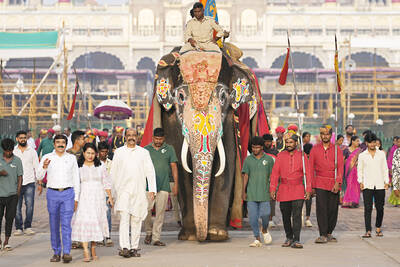It is almost 50 years since the Beach Boys sang about surfing and California girls, and began to take a once outlawed sport into mainstream culture. With surfing now a global industry and a hobby for millions, an ambitious plan has been launched to document the first days of the sport.
The Surfing Heritage Foundation, based in the southern Californian town of San Clemente, is seeking to collect the oral history of the sport by talking to its oldest living practitioners. It wants to find people who remember a time when waves were still uncrowded and surfing was seen as the preserve of a few crazy, dangerous wild men and women.
It will look at the sport before it became popular in the 1950s and 1960s, when it inspired California’s beach culture of girls in bikinis and the music scene that went with it.
The foundation is interviewing surfers in their 70s, 80s and 90s to preserve the story of the sport’s beginnings and its early culture. It is also sending out oral history kits to surfing groups across America and the world, asking anyone interested in the sport to join the effort.
“We need to capture these stories while these guys are still here. When they are gone, these stories will go with them and that would be a huge loss,” said Barry Haun, the foundation’s curator, as he stood barefoot in a museum that holds a stunning collection of surfboards, some of which are more than a century old.
Those stories are a link to a world that is fading fast. Surfing was once a very different sport from its current incarnation, dominated by professional athletes on tiny, super-lightweight boards taking part in a never-ending series of competitions all over the world. Older surfers remember boards made of heavy wood, weighing as much as 45kg. They remember the strange looks from people spotting them at the beach. They remember the endless summers of chasing waves and enjoying the thrills of a sport that had not yet gone mainstream or commercial.
It could be a race against time. The foundation recently interviewed one surfer in his 90s, E J Oshier, a few days before he died. Oshier had spoken vividly of surfing in the 1920s and 1930s. “He described a different world. If he got hungry while surfing, he just dived in the ocean to catch abalone and lobster,” said Haun. Others have described a literally different landscape, recalling surfing spots of the past that have since been lost to rampant coastal development and harbor-building. One old surfer even told of using his mother’s ironing board to ride waves. Another described taking an axe to the beach to carve out a board on the spot from some lumber.
OLD-TIMERS
Mickey Munoz, 73, has been a surfer for more than six decades. Looking as fit as someone 20 years younger and a celebrated surfing figure, he still rides the waves at every chance he gets.
He considers the oral history project as being his chance to pass on his knowledge of the sport to which he has devoted his life. “A lot of the history gets lost. But the older you get, the more precious it is,” he said.
Munoz remembers many of surfing’s early figures in southern California, including Robert Simmons, known as the “father of the modern surfboard,” who died while surfing in 1954. “I want to preserve the memories of men like Simmons. They were like gurus to me,” Munoz said.
The foundation has already uncovered surprising new details of the sport’s early history, when it was starting to grow in California after being introduced from Hawaii early in the 20th century.
Some of the strangest items in the foundation’s collection are several ancient surfboards with prominent swastikas on them. Nazi surfers? In fact, the huge, heavy wooden boards hark back to a time when the swastika was better known as an ancient eastern symbol. They were even marketed under the brand name of Swastika.
For modern professional surfers, such as three-times longboard world champion Colin McPhillips, the effort to preserve the early history of surfing is important — perhaps ever more so as the sport spreads yet further and becomes even more commercial. “I think that it is great to preserve it. It is what started the sport. They were inventing it all back then,” McPhillips said.
But while the sport may have changed beyond all recognition, Munoz says most surfers are still the same kind of people. They still love to talk about the minute details of board size and tell stories of waves they caught and ones that got away. They still worship that moment of power when surfer and wave unite.
“We are so lucky to be surfers and they don’t change that much. A surfer is a surfer and a wave is still a wave,” Munoz said as he prepared to hit the beach and take to the waters last week. “I love it. I first stood up on a board in 1947 and I just never lost the thrill.”

A jumbo operation is moving 20 elephants across the breadth of India to the mammoth private zoo set up by the son of Asia’s richest man, adjoining a sprawling oil refinery. The elephants have been “freed from the exploitative logging industry,” according to the Vantara Animal Rescue Centre, run by Anant Ambani, son of the billionaire head of Reliance Industries Mukesh Ambani, a close ally of Prime Minister Narendra Modi. The sheer scale of the self-declared “world’s biggest wild animal rescue center” has raised eyebrows — including more than 50 bears, 160 tigers, 200 lions, 250 leopards and 900 crocodiles, according to

They were four years old, 15 or only seven months when they were sent to Auschwitz-Birkenau, Bergen-Belsen, Buchenwald and Ravensbruck. Some were born there. Somehow they survived, began their lives again and had children, grandchildren and even great grandchildren themselves. Now in the evening of their lives, some 40 survivors of the Nazi camps tell their story as the world marks the 80th anniversary of the liberation of Auschwitz-Birkenau, the most notorious of the death camps. In 15 countries, from Israel to Poland, Russia to Argentina, Canada to South Africa, they spoke of victory over absolute evil. Some spoke publicly for the first